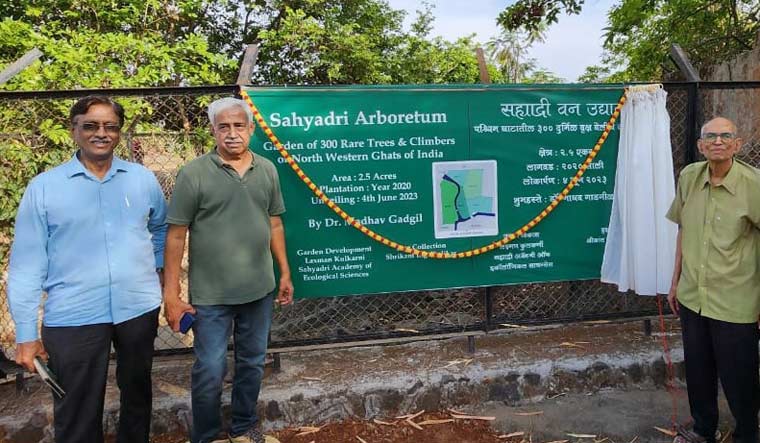Biodiversity in the western ghats can be accomplished only if we “move away from the current approach of conservation by exclusion and development by exclusion and adopt a pro-people approach of conservation by inclusion and development by inclusion,” said noted environmentalist Madhav Gadgil.
“Western Ghats are a treasure trove of biodiversity endemic to India over which the country has rights as the country of origin. This biodiversity is distributed in the whole range of its terrestrial and aquatic ecosystems that need to be protected. The current exclusionary approach is leading to continuing serious erosion of biodiversity. What we need are more and more ex-situ conservation projects.”
Gadgil was inaugurating the Sahyadri Arboretum, an in-situ conservation project near Pune on Sunday. The project, located at Green Echoes, Ark Wellness Retreat in Nandgaon, Mulshi Taluka, Pune, is a conservation initiative conceptualized by plant enthusiast Shrikant Ingalhalikar nearly a decade ago. “Observing the lack of efforts towards preserving the endangered plant and tree species from the Sahyadri range, which often require a significant amount of time to grow, I decided to take individual action,” said Ingalhalikar at a press conference. “I began collecting seeds and saplings of 200 rare Sahyadri species since no one was actively raising them here. Many of these seeds and saplings were procured from states like Goa, Karnataka, Madhya Pradesh, and Rajasthan. I developed techniques for growing saplings into mature trees using large grow bags. As the trees became ready for planting, Laxman Kulkarni, who runs the Ark Wellness Retreat in Nandgaon, offered a 2.5-acre site. Approximately 300 rare plants and trees have taken root in this picturesque habitat,” he added.
At the Sahyadri Arboretum, which Gadgil opened to visitors on Sunday, can admire over 300 plants and trees from the Sahyadri region, each accompanied by its botanical name and relevant information. The project will offer opportunities for botanists, ecologists, landscapers, and enthusiasts to study rare plant species in a single location. Among the rare plants and trees found at the Sahyadri Arboretum are Tetrameles, Pittosporum, Myristica, Knema, Walsura, and Dysoxylum.
An engineer by training, Ingalhalikar, has authored a series of books on the flowers of Sahyadri. His ‘Paddy Art’ installations, executed during the monsoon in rice plantations near Sinhagad, attract several tourists.


